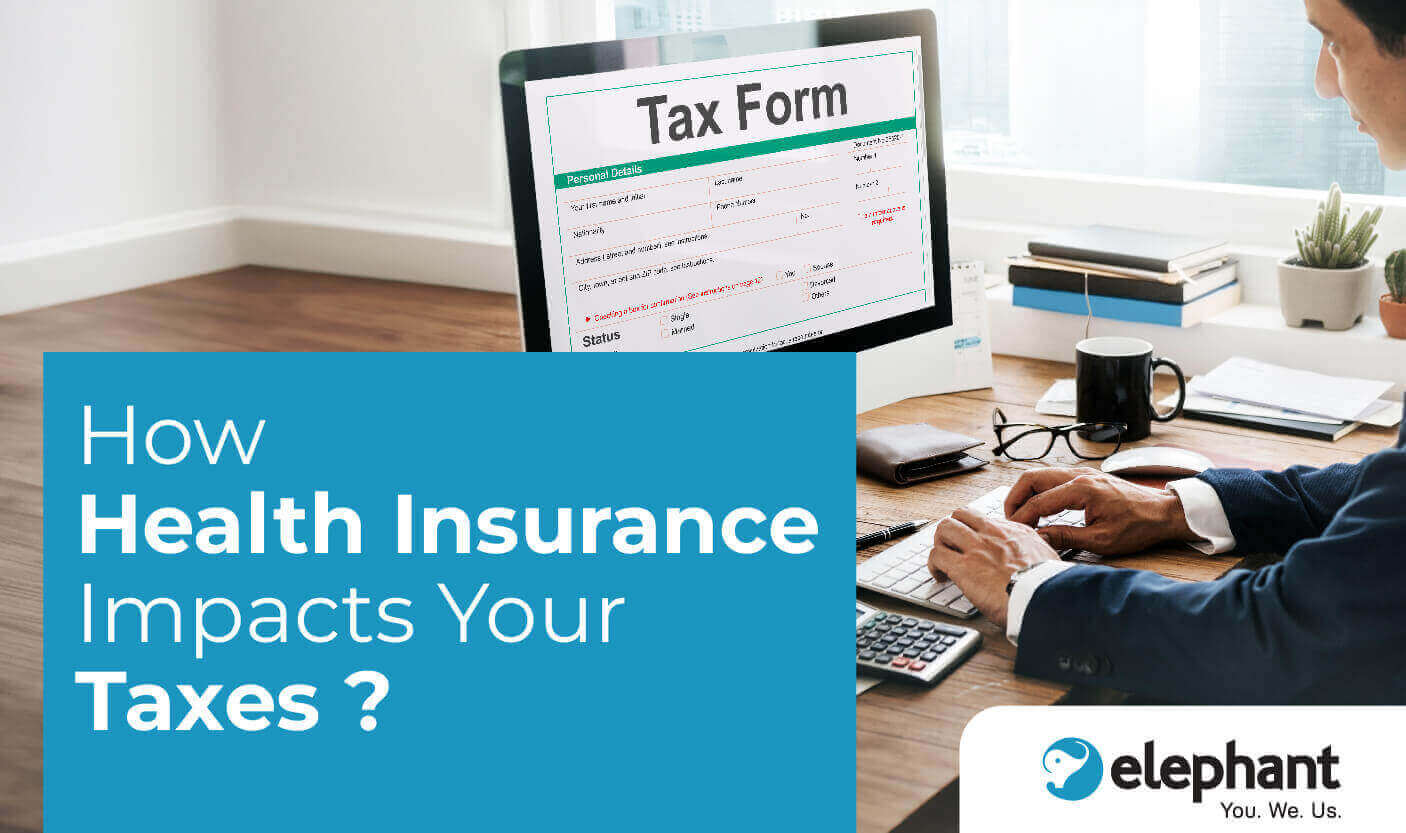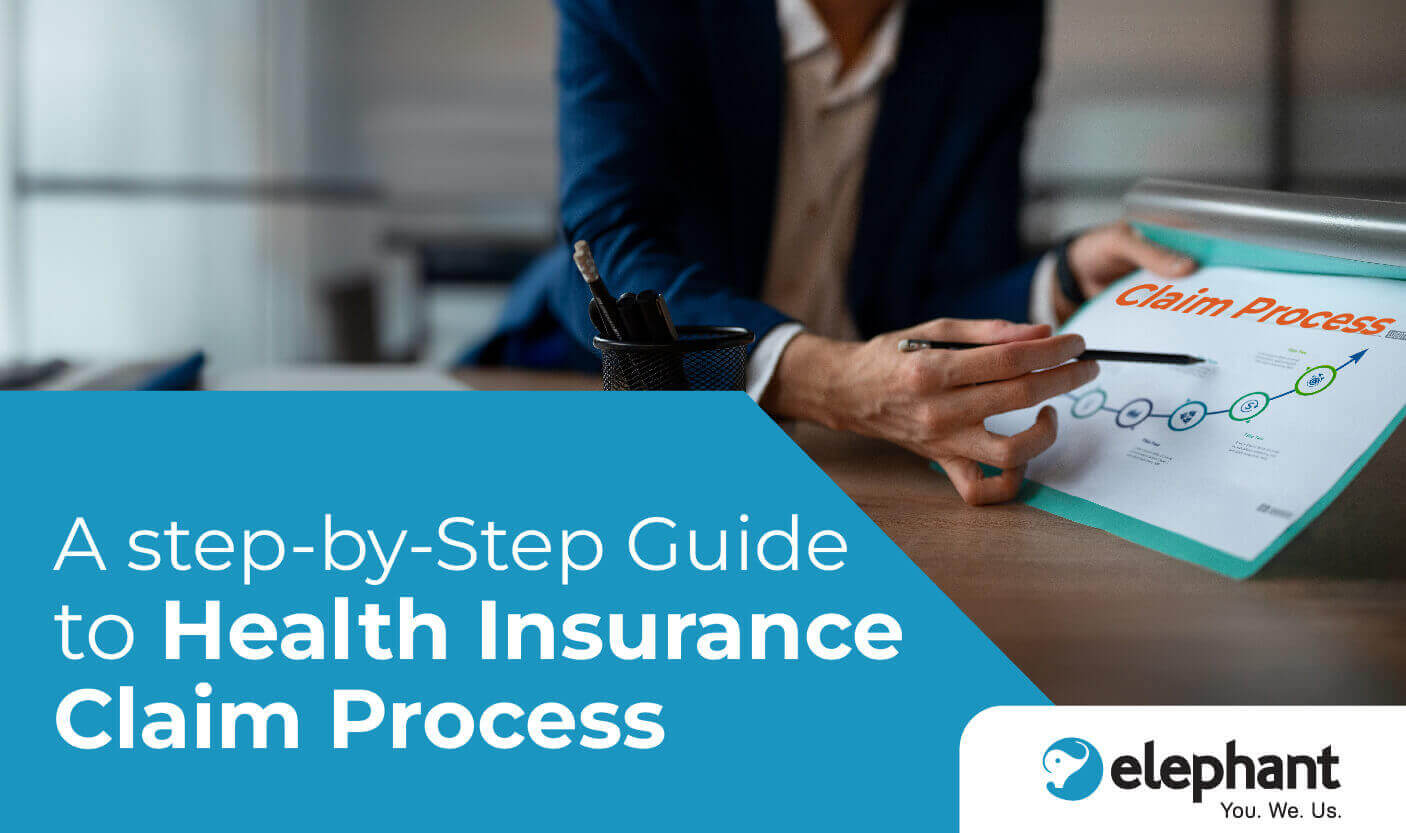-
CAR INSURANCE
Car InsuranceFlat 80%* OFFGet right cover at best price on your car insurance policy. Unlock your corporate superpower today.GET QUOTESWhat does your car insurance cover you for?Comprehensive coverageLiability coveragePersonal accident coverageZero-depreciation coverMany more add-on coversGet your car insured with the best features - completely online, right now!CloseWhat do you get at Elephant Insurance?Corporate Superpower of best Car Insurance DealsAI-Based Car Insurance RecommendationsHandpicked Insurers for Car InsuranceUnmatched Prices on Car Insurance PremiumsInstant Policy Issuance for your vehicle100% Assistance from ExpertsDigital Relationship ManagerBest-in-Class Claims ServiceLifetime Personalised AccountRenewal Management
-
TWO-WHEELER
INSURANCE
Two-Wheeler InsuranceStarting at Rs.546* only.Get right cover at best price and insure your two-wheeler for a joy ride. Unlock your corporate superpower today.GET QUOTESWhat does your two-wheeler insurance cover you for?Comprehensive coverageLiability coveragePersonal accident coverageZero-depreciation coverMany more add-on coversGet your two-wheeler insured with the best features - completely online, right now!CloseWhat do you get at Elephant Insurance?Corporate Superpower of best Two-wheeler Insurance DealsAI-Based Two-wheeler Insurance RecommendationsHandpicked Insurers for Two-wheeler InsuranceUnmatched Prices on Two-wheeler Insurance PremiumsInstant Policy Issuance for your vehicle100% Assistance from ExpertsDigital Relationship ManagerBest-in-Class Claims ServiceLifetime Personalised AccountRenewal Management
-
TERM LIFE
INSURANCE
Term Life InsuranceRs.1 crore life cover at Rs.503/month* only.Securing your loved ones future is not expensive, it is priceless! Be a superhero by unlocking your corporate superpower today.GET QUOTESWhat does your term life insurance cover you for?Death benefitsCritical illnesses coverAccidental death benefitWaiver of premiumMany more add-on coversGet your term life insurance with the best features - completely online, right now!CloseWhat do you get at Elephant Insurance?Corporate Superpower of best Term Life Insurance DealsAI-Based Term Life Insurance RecommendationsHandpicked Insurers for Term Life InsuranceHandpicked Insurers for Term Life InsuranceInstant Policy Issuance for you and your family100% Assistance from ExpertsDigital Relationship ManagerBest-in-Class Claims ServiceLifetime Personalised AccountRenewal Management
-
HEATLH
INSURANCE
Health InsuranceGet Rs.5 lakh health cover at Rs.18/day* only.Protecting your health is always our priority. Be a superhero by unlocking your corporate superpower today.GET QUOTESWhat does your health insurance cover you for?Unexpected medical billsPre and post hospitalisation billsDay care treatmentsMaternity, newborn care and organ donor expensesMany more add-on coversGet your health insurance with the best features - completely online, right now!CloseWhat do you get at Elephant Insurance?Corporate Superpower of best Health Insurance DealsAI-Based Health Insurance RecommendationsHandpicked Insurers for Health InsuranceUnmatched Prices on Health Insurance PremiumsInstant Policy Issuance for you and your family100% Assistance from ExpertsDigital Relationship ManagerBest-in-Class Claims ServiceLifetime Personalised AccountRenewal Management
-
CYBER PROTECT
Cyber Protect InsuranceGet Rs.1 lakh cyber protection cover at Rs.55/day* only.Don't be a victim of cyber fraud! Get right cover at best price on your cyber insurance policy. Unlock your corporate superpower today.GET QUOTESWhat does your cyber insurance cover you for?Legal protectionUnauthorised online transaction coverPhishing and email spoofing coverCyber stalking and identity theft coverCyber extortion and many more coveragesGet your cyber insurance with the best features - completely online, right now!CloseWhat do you get at Elephant Insurance?Corporate Superpower of best Cyber Insurance DealsAI-Based Cyber Insurance RecommendationsHandpicked Insurers for Cyber InsuranceUnmatched Prices on Cyber Insurance PremiumsInstant Policy Issuance for your cyber protection100% Assistance from ExpertsDigital Relationship ManagerBest-in-Class Claims ServiceLifetime Personalised AccountRenewal Management
-
OTHER
PRODUCTS5
Critical Illness InsuranceA must-have protection to secure you against critical illnesses.GET QUOTESPersonal Accident InsuranceAccidents are sudden and can cause damage to your financial planning as well.GET QUOTES
Home / Page 3
Welcome to Elephant Blog
Helping you to make informed decisions about insurance

published on April 24, 2024 | Car Insurance
Choosing a car insurance that is perfectly fit to your needs can be a difficult task for many as there are so many options in the market. Comprehensive car insurance and bumper-to-bumper car insurance are the two most popular insurance policies in India. In this blog post, we will explore the key differences between the two insurance policies so that you make an informed decision while you are out in the market purchasing insurance.
What is a Comprehensive Car Insurance?
Comprehensive insurance can be considered as a huge shield that covers various aspects. It goes beyond the basic protection and offers protection against:
- Accidents: Met with an accident? This type of insurance covers the cost of repairs you may need after an accident.
- Theft: It repays you for the vehicle’s insured declared value () if it gets stolen.
- Fire: All the damages that may be caused to your car due to a fire breakout will be covered under this insurance policy
- Natural Disasters: It assists you by covering the cost of damages caused by disasters like floods and earthquakes.
- Riots & Strikes: Damages caused to your car due to these activities are also covered under this insurance.
In addition, you can tweak your insurance policy! Add-on covers are offered by many insurance providers:
- Engine Protect: In case your engine breaks down, this cover helps in covering for the costs of repairs or replacements.
- Return to Invoice: This cover reduces the gap between the vehicle’s current value and its on-road cost during claim settlement.
- Personal Accident Cover (PAC): In case of an accident where either you or the passengers in your car need financial assistance to meet the costs of injuries/hospitalisation, this cover comes to the rescue.
Here is the catch: When parts are replaced after a claim, depreciation (reduction in value due to age) is applied. This implies you might need to pay a portion of the repair and replacement costs from your hand. Also, your car insurance doesn’t cover the wear and tear of the car, electrical/mechanical breakdowns because of negligence, or
Bumper-to-Bumper Insurance: An Upgraded Protection
A supercharged version of comprehensive car insurance is called bumper-to-bumper car insurance. It offers every one of the advantages of comprehensive insurance, however with a significant advantage:
- No Depreciation on Parts: You get the full cost of repairs or replacements for most car parts after an accident, no matter what their age. You will not have to shell out money from your pocket.
- Enhanced Coverage: When compared to comprehensive car insurance, bumper-to-bumper car insurance provides broader coverage. This includes coverage for consumables like ointments and filters utilised during repairs.
Sounds perfect, right? Well, almost. Here are some considerations:
- Higher Premiums: Added security comes at a price. The insurance premiums for bumper-to-bumper car insurance are higher when compared to comprehensive car insurance.
- Renewal Restrictions: Some insurance providers put limits on who can get bumper-to-bumper car insurance, particularly for older cars. Check the renewal terms prior to picking this option.
Choosing Your Champion: Comprehensive vs. Bumper-to-Bumper
Depending on your car’s age and your tolerance of risk, the best choice will differ. Let’s break it down:
- New Cars (Up to 3 Years Old): Depreciation is negligible for new cars. An effective choice for such cars will be opting for comprehensive insurance with add-ons like engine protection and return to the invoice.
- Pre-Owned Cars (3 to 5 Years Old): Depreciation is considered for these cars. Opting for comprehensive insurance with a zero depreciation add-on for parts like engines and headlights is advisable.
- Older Cars (Above 5 Years Old): Depreciation of value can be critical for older cars. As the complete repair costs are covered under a bumper to bumper car insurance, it becomes a more alluring choice for car owners
Conclusion
To maintain your peace of mind and to safeguard your prized possession: your car, it is important that you choose the perfect insurance protection that suits your needs. Once you comprehend the various coverage options and their requirements along with their differences, you can make a well-informed decision and choose the perfect insurance plan that is suited to your needs.
*Terms and conditions apply. The information provided in this article is generic in nature and for informational purposes only. It is not a substitute for specific advice in your own circumstances. You are recommended to obtain specific professional advice from before you take any/refrain from any action. Tax benefits are subject to changes in tax laws. Please contact your tax consultant for an exact calculation of your tax liabilities.| EL/BLOGS/24-25/02

published on April 20, 2024 | Car Insurance
When an extra cover of zero depreciation is purchased alongside comprehensive insurance, it is referred to as bumper-to-bumper car insurance. The cover ensures that the policyholder is repaid with no deductions that happen because of depreciation in case of an accident. This blog will explore the details of this protection so you are informed before settling on a protection plan that is good for your requirements.
What is Bumper-to-Bumper Car Insurance?
It gives complete financial protection to your car and is an appealing choice for car owners when compared with standard car insurance. A normal comprehensive policy considers depreciation during the process of claims which directly impacts your claim amount. While a bumper-to-bumper car insurance, the policyholder gets the full claim amount as it doesn’t consider depreciation.
What is Covered Under a Bumper-to-Bumper Car Insurance?
In bumper-to-bumper car insurance, protection for various parts of your car is given. It doesn’t take into account deductions due to depreciation and totally compensates for the damages caused. This means that if you meet with an accident, you will be compensated completely, with no deductions.
The parts that are covered are as follows:
| Bumpers | Damages caused to both the bumpers (Front and back) |
| Exterior Tail lights and Head Lights | Damaged or broken headlights and tail lights |
| Side Mirrors | Damaged or broken side mirrors |
| Windshield & Windows | Cracked or shattered windshields and windows |
| Alloy Wheels | Dented or scratched alloy wheels |
What are the Exclusions in Bumper-to-Bumper Car Insurance?
Bumper-to-bumper car insurance gives total coverage but there are certain exclusions. They are as follows:
| Wear and Tear | Gradual damage to parts due to regular use (e.g., faded paint) |
| Mechanical Breakdown | Engine failure or other mechanical issues not caused by an accident |
| Engine Damage from Oil Leakage | Damage to the engine due to a leak |
| Accidents Due to Negligent Driving | If the policyholder’s negligence during driving caused the damages |
| Unapproved Modifications | Damages to parts not approved by the car manufacturer |
| Natural Disasters (Unless Specified) | Floods, earthquakes, or other natural disasters (check your policy for details) |
How to Purchase a Bumper-to-Bumper Car Insurance?
While buying or renewing a comprehensive insurance policy, bumper-to-bumper insurance can be purchased with it. To get zero depreciation coverage, you need to pick this add-on while customising your insurance plan.
Tips to Purchase A Bumper-to-Bumper Car Insurance
Car owners need to consider these things before buying bumper-to-bumper car insurance. They are as per the following:
- Compare quotes given by various insurance providers to track down the best fit for your requirements.
- Ensure the insurance provider you choose is trustworthy and has a decent claim settlement record.
- Review the agreements of the insurance policy carefully to understand what is covered and what are the exclusions under the policy.
Factors Affecting Premiums for Bumper-to-Bumper Car Insurance
The premiums are affected by things like the IDV (Insured Declared Value) of your car, your driving record, your age, the make and model of your car, and your location. Your premiums can be brought down by:
- Increasing your voluntary deductible
- Maintaining a clean driving record
- Installing anti-theft devices
- Renewing your policy promptly
- Avoiding frequent claims
Conclusion
For Indian car owners, it is ideal to purchase bumper-to-bumper car insurance in the present day and age as the expenses of owning a car are rising. Alongside coverage, it additionally gives genuine peace of mind to the car owner. You can safeguard your car by choosing smartly assuming you understand what the policy covers, the premiums you need to pay, and its advantages. It stays the most ideal choice for safeguarding your car as it gives total coverage which ensures financial well-being.
Want to get car insurance tailored to your needs? Reach out to us at support@elephant.in or on our toll-free support number- 1800 266 9693, to talk to our experts! We will help you acquire a car insurance that is customised to your needs!
*Terms and conditions apply. The information provided in this article is generic in nature and for informational purposes only. It is not a substitute for specific advice in your own circumstances. You are recommended to obtain specific professional advice from before you take any/refrain from any action. Tax benefits are subject to changes in tax laws. Please contact your tax consultant for an exact calculation of your tax liabilities.| EL/BLOGS/24-25/01

published on April 2, 2024 | Health Insurance
In the complex world of personal finance, tax planning and health insurance are tightly linked. As we explore the evolving world of India’s healthcare and taxation framework, understanding how your health insurance plan impacts your taxes becomes vital. This broad guide plans to clear up the complexities, allowing you to make informed decisions for both your well-being and financial prosperity.
Understanding Tax Benefits – The Lay of the Land:
First, let us understand the landscape before we get into the particulars of tax deductions. The Indian Income Tax Act, 1961 offers different tax reductions connected to health care coverage plans, and these can be astoundingly valuable in decreasing your income tax payable.
1. Section 80D
Maximising Your Deduction: Note that the tax deduction limit varies based on age. This limit applies to the total premium paid for all covered individuals. So, a young working couple can claim up to Rs. 50,000 (Rs. 25,000 each) as a joint deduction if both have individual plans. The deduction amount, however, increases to Rs. 50,000 per fiscal year for senior citizens above the age of 60.
2. Critical Illness Cover
This additional deduction for critical illness cover acts as a double shield. Besides the fact that you get the advantage of inclusion for hazardous illnesses, you also additionally save taxes!
3. Preventive Check-ups
Proactive healthcare is promoted by this deduction, which encourages regular checkups that may help detect health issues early and prevent complications. Keep in mind, qualified expenses incorporate a wide range of tests, from glucose and cholesterol levels to mammograms and prostate tests. Additionally, you get Rs 5000 tax benefit.
4. Employer-Provided Plans
If your employer offers a medical coverage plan, view yourself as lucky! The sum paid by your employer as premiums is not added to your taxable pay, substantially decreasing your liabilities. Keep in mind that this advantage applies just to the sum paid by your employer, not on any extra premium you contribute separately.
5. Section 80C
Section 80C permits certain investments and expenses to be tax-exempted. By planning your investments in such a way that they are spread diversely across various options like NSC, unit-linked insurance policies (ULIPs), the public provident fund (PPF), etc., you can claim deductions up to Rs 1,50,000. By taking tax benefits for health insurance plans under 80C, you can avail of a reduction in your tax burden.
Some Things To Keep In Mind When Availing Tax Reliefs
LET US Take a look at the things you must remember while availing tax deductions under Section 80D:
- Tax deductions are not applicable for health insurance premiums paid for in cash.
- If health insurance premiums are paid in parts by an individual and the parent, it makes both of these parties eligible for tax deductions.
- Premiums paid for siblings, grandparents, uncles and aunts are not qualified for tax deductions.
- Section 80D states that health insurance premiums when paid on behalf of working children are not eligible for tax relief.
- Group health insurance premiums the employer pays do not qualify for tax relief.
- No deduction is provided on the service tax and cess amount added to health insurance premiums.
Conclusion
As we conclude this guide on tax benefits on health insurance plans in India, the meaning of informed direction becomes obvious. Along with safeguarding you from health-related crises, your health coverage plan is a fundamental instrument for tax reduction. Utilise your obtained information, talk with specialists, and build a strong foundation for strength for financial prosperity that can get through future vulnerabilities.
Visit Elephant.in to get the best health insurance quotes, tailored to your needs! Email us at support@elephant.in or call us on our toll-free support number- 1800 266 9693 to get in touch with our experts!
*Terms and conditions apply. The information provided in this article is generic in nature and for informational purposes only. It is not a substitute for specific advice in your own circumstances. You are recommended to obtain specific professional advice from before you take any/refrain from any action. Tax benefits are subject to changes in tax laws. Please contact your tax consultant for an exact calculation of your tax liabilities.| EL/BLOGS/23-24/11

published on March 19, 2024 | Health Insurance
Understanding the concept of the No Claim Bonus (NCB) in health insurance is essential to making informed decisions and safeguarding one’s wealth. The intricacies of NCB are discussed in depth in this blog post, with an emphasis on its significance, benefits, and crucial application for policyholders in the field of medical coverage.
Get insured in 3 easy steps! Visit Elephant.in and fill out the details, compare prices and get your health insurance policy instantly!
No Claim Bonus: Explained
NCB is a monetary incentive proposed to policyholders by insurers for each claim-free year. Going past being a financial incentive, NCB is a consolation for policyholders to zero in on preventive clinical consideration, which adjusts the interests of insurers and policyholders toward a common goal of success.
Types of No Claim Bonus
In the health insurance industry, insurers frequently provide bonuses for not making a claim. Private and public sector insurers offer NCB to policyholders who fall under the qualification standards. By and large, there are two kinds of NCB in a health insurance plan. The types are as follows:
- Cumulative Bonus: The inclusion sum increases by a fixed rate when the policyholder has a claim-free year. Remember that the premium that must be given continues as before. This increase happens for every claim-free year.
- Renewal Discounts: For every claim-free year, the rate of premium of the policy decreases by a particular percentage under this type of no-claim bonus. The insured sum remains the same under this kind of bonus.
Advantages of A No-Claim Bonus in Health Insurance
NCB in health insurance has many benefits. Some of these benefits are:
- You can financially protect yourself and your family in the event of a health crisis with the assistance of the NCB.
- The NCB in health insurance is adaptable. The no-claim bonus will not be affected when switching insurers. The bonus you have accumulated over the years will remain and be applicable. The bonus can be transferred to the new insurer.
- The benefit of a no-claim bonus encourages the policyholder to stay healthy and fit and only file a claim when it is required.
- The cost of renewing the health insurance plan is reduced as a result of the plan offering more coverage at a lower cost.
Applicability of No Claim Bonus
Not all insurance policies offer the no-claim bonus feature. Policies that do offer NCB often come with certain terms and conditions. It is vital to go through the policy documents in detail while you are in the market looking to buy a health insurance policy so that you are well informed whether it offers NCB features or not.
The benefits of a no-claim bonus are very useful. This reward can be benefitted under both an individual health insurance plan and a family floater health insurance plan. A family health floater plan covers the whole family while an individual plan just covers a solitary individual.
Make the Most Out of the No-Claim Bonus
From well-being initiatives that add to keeping up with great health to making informed choices to forestall unnecessary claims, policyholders are empowered to effectively partake in the amplification of their NCB benefits. To get the most out of their no-claim bonus, policyholders can follow these tips:
- Preventive Care: Frequent check-ups, scheduled vaccinations, and screenings are your companions. Assuming command over your well-being keeps minor issues from growing into costly claims.
- Claim Awareness: Being well-informed about your policy’s exclusions will help you avoid making unnecessary claims for expenses that are not covered.
- Stay Informed: Keep yourself updated about IRDAI regulations regarding NCB and potential changes in your insurer’s policy terms.
Conclusion
In conclusion, understanding and utilising NCB can transform your health insurance experience. By staying updated about NCB and its advantages and guidelines, you unlock a useful tool for managing your healthcare costs and well-being. Therefore, make NCB your trusted companion throughout your healthcare journey and pave the way for long-term financial security and health.
Visit Elephant.in to find the most suitable health insurance quotes! To get in touch with our professionals, send us an email at support@elephant.in or call our toll-free support number, 1800 266 9693!
*Terms and conditions apply. The information provided in this article is generic in nature and for informational purposes only. It is not a substitute for specific advice in your own circumstances. You are recommended to obtain specific professional advice from before you take any/refrain from any action. Tax benefits are subject to changes in tax laws. Please contact your tax consultant for an exact calculation of your tax liabilities.| EL/BLOGS/23-24/14

published on March 14, 2024 | Health Insurance
In the world of insurance, health insurance is the most sought-after. A health care insurance that covers your whole family under one single policy is called family health insurance. A determined sum is insured and shared among all the members of the family.
It is important to diligently pick the correct family health insurance plan to safeguard your family’s well-being. However, exploring the various advantages and features can be challenging. Through this blog, we hope to help you understand the various coverage options and benefits of family health insurance plans so that you can make informed decisions for your family’s well-being.
Understanding Coverage Options: Weaving a Safety Net for Every Need
A range of coverage options come under a family health insurance plan, taking care of different necessities. Coverage options under a family health insurance plan are as follows:
- Cost of Hospitalisation: Costs of hospitalisation of over 24 hours are also taken care of under a family health insurance policy.
- Organ Donor Expenses: In an occasion of emergency when an organ transplant is fundamental, the costs of obtaining the organ and the donor-related costs are covered.
- Ambulance Charges: Expenses of availing the ambulance service during a health-related crisis are also covered under family health insurance.
- Pre and Post-Hospitalisation Expenses: The clinical costs generated before hospitalisation (clinical examination, tests) and after release (follow-ups) are covered up to a specific number of days.
- In-house Treatment: Opting for medical treatment at home is an expensive deal. Having family health insurance helps in financing the in-house treatment.
- Mental Illness Cover: A family health insurance plan helps cover costs for the treatment of mental illnesses like depression and anxiety. It also aids in covering the costs of preventive medications for the same.
- Maternity Care: Hospitalisation and clinical costs pertaining to labour, pre-birth and post-pregnancy are covered under a family health insurance plan. Along with that, the costs of regular check-ups as well as ambulance services are also taken care of under this plan.
What are The Benefits of Family Health Insurance Policy?
Family health insurance plans rise above simple monetary protection, they come with a set of advantages that promote complete prosperity:
- Affordable premiums: Opting for a family health insurance plan is low-cost when compared to acquiring personalised health insurance for each member of the family. Thus, the plan allows affordable coverage and is lighter on your pockets.
- High coverage for all members: The sum insured under the family floater policy can be used entirely by any member who falls ill. As such, each family member has complete access to the sum insured and can avail of high coverage if you choose an optimal sum insured level.
- Maternity coverage : This cover is allowed under many plans: For a young couple who would be starting a family shortly, family health plans having maternity coverage is a good choice. These plans allow coverage for maternity-related expenses.
- You can opt for a comprehensive cover: Family health plans come with different coverage benefits, and you can compare and choose a plan that has the most inclusive coverage features.
- Easy addition of members: Family floater plans allow you the convenience of adding new family members. Depending on the terms and conditions of the policy, you can easily obtain coverage for a new member, for example, a newborn child. You would simply need to request the insurer and pay an extra premium.
- Tax benefits: The main advantage of family health insurance plans is that they open doors to tax benefits. A tax reduction of INR 25,000 will be granted when acquiring family health insurance. In the case of senior citizens, this reduction amount increases to INR 50,000.
Conclusion
Picking the right family healthcare coverage plan is fundamental to achieving your family’s long-term prosperity. By learning the intricacies of the various coverage options and benefits of family health insurance, you can confidently navigate the healthcare landscape and have peace of mind knowing that your loved ones are protected. Your investment in family health insurance today will be rewarding as it will ensure that your family is safe and secure.
To clear any further doubts, please reach out to our specialists by messaging us at support@elephant.in or call us on our toll-free help number: 1800 266 9693! Visit Elephant.in to get the best family health insurance quotes!
*Terms and conditions apply. The information provided in this article is generic in nature and for informational purposes only. It is not a substitute for specific advice in your own circumstances. You are recommended to obtain specific professional advice from before you take any/refrain from any action. Tax benefits are subject to changes in tax laws. Please contact your tax consultant for an exact calculation of your tax liabilities.| EL/BLOGS/23-24/13

published on March 9, 2024 | Health Insurance
In the present day and age, organisations have understood that their workers are a fundamental part of their prosperity and quite possibly their most significant resource. Organisations ensure that their workers are all safeguarded, similar to any of their different assets. In India’s developing healthcare landscape, employer-supported health insurance arises as a protector, guaranteeing the well-being of the employees. This blog intends to unwind the hidden benefits of these group health insurance plans, digging into the subtleties that make the most essential part of employee welfare.
A group health insurance policy can be procured easily in 3 steps! Visit Elephant.in, fill up the necessary form, compare quotes, pay and instantly get the policy!
Comprehensive Coverage for Employees
Employer-supported health insurance in India goes past the essentials, offering broad coverage custom-made to meet the particular requirements of employees. From hospitalisation costs to short-term medicines, these plans act as a strong security net, guaranteeing the employees acquire quality medical care without any financial strain. Additionally, these plans frequently incorporate coverage for pre-existing conditions, making them beneficial for employees with existing medical concerns. This adds a layer of inclusivity, guaranteeing that a wide range of employees can benefit from the insurance plan.
Financial Security During Health Crises
In a period where there are plethora of potential threats to an individual’s well-being, employer-supported healthcare insurance gives financial security during health emergencies. It is a safeguard against high medical costs, offering employees the genuine serenity that their expenses during such emergencies are covered, lifting a heavy burden off their shoulders. Moreover, a few policies incorporate critical illness coverage, giving a single amount payout in case of serious clinical problems. This element helps with taking care of treatment costs as well as helps in tending to lifestyle changes that might be important after diagnosis.
Cost-Effective Health Coverage
Employer-sponsored health insurance’s cost-sharing mechanisms are one of the hidden benefits. Employers contribute to the critical portion of the premiums, making it a practical choice for employees. This ensures that a larger portion of the workforce has access to comprehensive health coverage in addition to easing the financial burden on employees. Besides, with group insurance policies, the risk is divided among a bigger pool of people, prompting favourable premium rates. This collaborative method makes health insurance more reasonable for employees, regardless of their health conditions.
Wellness Programs for a Healthier Workforce
Along with health insurance for staff, numerous employers incorporate well-being programs into their health care coverage plans. Standard well-being check-ups, preventive care events, and fitness programs add to encouraging a culture of prosperity, making employees more proactive about their well-being. Employers are progressively putting resources into employee health well-being platforms and applications, giving customised well-being tests and insights. This proactive methodology prevents diseases as well as advances a positive way of life among employees.
Tax Benefits:
Health insurance premiums paid by employers are generally tax-deductible as a business expense. Additionally, employer contributions to employees’ health insurance premiums are typically excluded from employees’ taxable income, resulting in tax savings for both employers and employees.
Access to Quality Healthcare Facilities
Various employer-supported group health insurance plans have tie-ups with good clinics and medical service providers. Employees will have easier access to high-quality healthcare facilities as a result of this, making it easier for them to get the right treatment when they need it. Health camps and screenings in the workplace can elevate this advantage for employers. These on-location medical services can improve accessibility and also cultivate a proactive way to deal with health management among employees.
Conclusion
An essential part of employee welfare is employer-sponsored group health insurance policies. Keep in mind that these group plans are not a one-size-fits-all answer. In any case, their hidden benefits ought to be considered carefully. In embracing these benefits, organisations are not merely investing in health insurance they are investing in the prosperity and vitality of the collective future.
To get the best quotes on employer-sponsored group health insurance, visit Elephant.in! Email us at support@elephant.in or call us on our toll-free support number- 1800 266 9693 to get in touch with our experts!
*Terms and conditions apply. The information provided in this article is generic in nature and for informational purposes only. It is not a substitute for specific advice in your own circumstances. You are recommended to obtain specific professional advice from before you take any/refrain from any action. Tax benefits are subject to changes in tax laws. Please contact your tax consultant for an exact calculation of your tax liabilities.| EL/BLOGS/23-24/12

published on March 7, 2024 | Health Insurance
Understanding the complexities of filing a health insurance claim becomes important for financial well-being in this ever-evolving healthcare landscape of India. In this guide, we aim to simplify the claims process so that you can easily and confidently navigate health insurance claims.
What is an Insurance claim?
An insurance claim is a formal request made by an insured individual or entity to an insurance company seeking compensation or coverage for a covered loss or event. When an insured event occurs, such as an accident, illness, injury, or damage to property, the insured party submits a claim to their insurance provider to receive financial assistance or reimbursement as per the terms of their insurance policy.
Assess Your Health Insurance Policy
Before diving into the process of claims, understanding the nuances of your policy is essential. The foundation for an easy claim process is laid by knowing your policy. Know about what is safeguarded under your policy and what isn’t secured. This prevents surprises during the claim process. You must identify the network hospitals that fall under your policy. Choosing a network hospital simplifies the payment process by allowing for a cashless claim process.
Navigating the Documentation Maze
The claims process includes plenty of documentation. Sorting them out efficiently guarantees a problem-free and seamless claims process. Significant reports must be assembled and submitted on time to get your claim approved. The essential documents are as follows:
- Your health e-card
- Your photo ID proof
- Proof of address
- Original discharge summary
- Doctor’s prescription recommending hospitalisation
- Doctor’s consultation slip and prescriptions for diagnostic tests
- Certificate from the attending doctor
- Prescription for medicines and original pharmacy bills
- Diagnosis reports of X-rays, blood tests, etc.
- Other original receipts from the hospital
- Breakup of the hospital bill
- Ambulance receipt, if applicable
- FIR, in case of an accident
- & Many More based on the type of hospitalisation
Choosing between Cashless and Reimbursement Claims
Understanding the distinction between cashless and reimbursement claims is necessary. Both have their benefits, and your decision relies upon the situation.
- Cashless claims: When you are utilising the services of a hospital that falls under the policy network, opt for a cashless claim. The insurer settles bills directly with the hospital, minimising your financial involvement.
- Reimbursement claims: In non-network hospitals or specific situations, reimbursement claims come into play. Pay the bills upfront and later claim the amount from your insurer.
Procedure to File a Cashless Claim
To file a cashless claim, follow the steps below:
- Choose the right network hospital for medical treatment. One can find the network of hospitals within the policy.
- Inform the insurer 3 days ahead of time and get their approval for the claim within 24 hours of hospitalisation in cases of emergencies. Now Insurance companies are trying to approve the claim within 90 minutes too.
- Acquire the pre-authorisation form and fill it out properly. Submit it along with your identity proof and health card.
- The insurance provider will verify the claim and settle the medical bills and costs directly with the hospital.
Process of Filing a Reimbursement Claim
If you decide to get treatment in a hospital that isn’t under the insurer’s network, you should file a claim for reimbursement. Follow the steps below:
Step 1: The initial step is generally to inform the insurer to begin the process of approval of a claim. The insurer ought to be notified 3 days in advance or within 24 hours of hospitalisation during an emergency.
Step 2: Get a hold of the claim settlement form from the insurance agency or the hospital.
Step 3: Settle medical expenses from your pocket and gather the fundamental bills and receipts from the emergency clinic after discharge.
Step 4: Complete the claim form, send the vital records to the insurance provider, and you can start the most common way of documenting a case.
Step 5: Before approval, the insurance provider will completely audit the documents submitted. The claim will be processed and the amount of the claim will be deposited into your account once the submitted documents are approved.
Conclusion
As we draw to a close this guide on how to understand the claims process for health insurance, remember that information is your most important tool. Consistently review and update your knowledge regarding your health insurance policy claims. Remain informed about changes in guidelines and processes to adjust seamlessly to this ever-developing landscape.
Reach out to our specialists by messaging us at support@elephant.in or call us on our help number-1800 266 9693! Visit Elephant.in to get the best health insurance quotes!
*Terms and conditions apply. The information provided in this article is generic in nature and for informational purposes only. It is not a substitute for specific advice in your own circumstances. You are recommended to obtain specific professional advice from before you take any/refrain from any action. Tax benefits are subject to changes in tax laws. Please contact your tax consultant for an exact calculation of your tax liabilities.| EL/BLOGS/23-24/11

published on March 2, 2024 | Health Insurance
Exploring the complexities of health insurance can be overwhelming, frequently intensified by winning cases that cloud our comprehension. In this extensive guide, we plan to expose normal misinterpretations encompassing health insurance. This guide will clear the myths surrounding health insurance so that you can have a clearer viewpoint on what health care coverage genuinely incorporates and can make informed choices.
1. Myth: Health Insurance is Only for the Elderly
There is an incredibly popular myth that health insurance is just significant for the elderly. Going against the norm, getting medical coverage is imperative for all ages. Mishaps and disorders can happen to anybody. Having health insurance from the beginning ensures financial security in the event of unexpected circumstances.
As opposed to mainstream thinking, buying medical coverage in one’s twenties or thirties is a shrewd choice. Getting health insurance early frequently accompanies lower premium charges, and you can collect the advantages of a No Claim Bonus throughout the years. Consider exploring policies specifically designed for young individuals.
2. Myth: Only Hospitalisation is Covered under Health Insurance
Another myth that revolves around health insurance is limited coverage. Medical coverage goes past covering costs for hospitalisation. Current health care coverage strategies offer a wide scope of insurance, including prescriptions, preventive vaccinations, maternity benefits, and even insurance for alternative treatments. Understanding these subtleties guarantees you take full advantage of your healthcare coverage policy.
Exploring health insurance policies that include extra wellness benefits is advisable. The benefits usually include frequent scheduled health check-ups, immunity vaccinations and wellness events that promote overall well-being.
3. Myth: Pre-Existing Conditions Mean No Coverage
There’s a popular belief that health insurance will not cover already existing medical conditions. While the facts confirm that insurers investigate pre-existing conditions, it doesn’t mean a total refusal of insurance. In India, policies frequently have waiting periods for people with pre-existing conditions trying to acquire health insurance. They become qualified for insurance after the termination of the waiting period. When applying for health insurance, you must disclose any pre-existing conditions to the insurer to avoid problems in the future.
Therefore, it is advised to explore policies with small waiting periods or opt for policies that offer insurance coverage for certain conditions after a specific waiting period.
4. Myth: It is Expensive to Gain Access to Health Insurance
Cost is always a concern when it comes to purchasing health insurance. It is believed that health insurance is being restrictively costly for the average individual. In any case, the realm of health insurance in India has been developed to take care of diverse financial groups.
Plans are tailored by a variety of insurance companies with low-cost options with adequate health insurance coverage. Use online tools to analyse plans, and you may be astonished at the scope of open health care coverage policies accessible.
Choose family floater plans, which pool all family members within a single health insurance policy, to save money. Settling on such an arrangement may reduce the sum you need to pay for medical coverage in comparison to individual health insurance.
5. Myth: Corporate Health Cover is Sufficient
Having corporate health insurance does not mean you should not opt for getting individual health insurance. It is not recommended to completely rely on the corporate coverage; always get personal health insurance separately.
Corporate policies might have restrictions, and coverage might cease upon retirement or a change of employment. Having an individual health insurance policy ensures continuous coverage, offering a safety net beyond corporate benefits. When relying on corporate health cover, understand the limitations, and consider supplementing it with individual policies. This ensures seamless coverage transitions during career changes or retirement.
6. Myth: Cost of Treatment will be Completely Reimbursed
The percentage of reimbursement is policy specific. Most policies have a limit for room charges depending upon the total sum insured and the excess amount needs to be borne by the insured. A policy has sub-limits for other expenses like medicine, which may fall under partial reimbursement. It would be sensible to choose the perfect plan for your needs from the array of policies available.
7. Myth: Purchasing Health Insurance Online is Risky
In this digital era, buying anything is convenient and just a click away – health cover included. All the details are uploaded on the websites with secure payment gateways and complete privacy. Queries are addressed and information is verified online quickly. Compare and buy health insurance policies in three easy steps! Visit Elephant.in to find the perfect health insurance, tailored to your needs!
Conclusion
Deciphering common myths about health insurance is essential in making informed decisions. Health insurance is a dynamic and comprehensive tool that goes beyond hospitalisation coverage. It dispels the myth that it is only for the elderly and is relevant to people of all ages. By deconstructing these myths, you enable yourself to go with decisions that focus on your wellbeing and financial prosperity. In the complicated landscape of health insurance, information is your strongest ally.
To get the best health insurance quotes perfectly fit for your needs, visit Elephant.in! Email us at support@elephant.in or call us on our toll-free support number- 1800 266 9693 to get in touch with our experts!
*Terms and conditions apply. The information provided in this article is generic in nature and for informational purposes only. It is not a substitute for specific advice in your own circumstances. You are recommended to obtain specific professional advice from before you take any/refrain from any action. Tax benefits are subject to changes in tax laws. Please contact your tax consultant for an exact calculation of your tax liabilities.| EL/BLOGS/23-24/10

published on February 26, 2024 | Car Insurance
In the intricate world of car insurance, understanding the nuances of premiums and coverage is essential for every vehicle owner. One question that often arises is– What is the basic Own Damage cover in car insurance? In this in-depth guide, we’ll dissect this crucial element, shedding light on its intricacies and emphasising why it stands as a cornerstone in the foundation of your car insurance policy.
The Importance of Own Damage Cover
At its essence, the Own Damage cover serves as a financial safeguard for your vehicle. It provides coverage for impairments to your vehicle against a pool of potential risks. Be it a minor fender bender, the aftermath of a severe hailstorm, or theft, this premium acts as a safety net, assuring your financial burden is dealt with appropriately in case of incidental damages.
Recognising that the basic Own Damage cover is not a one-size-fits-all concept is imperative. It ensures that financial assistance is provided for repairs or replacements, leaving no room for expenses. OD insurance can be tailored as it is flexible and one can add additional coverage options like zero depreciation, engine protection, and roadside assistance.
Components of Own Damage Cover Premiums
Diving deeper into the concept of basic Own Damage premium, it’s crucial to grasp the distinct components that collectively determine the amount you pay for coverage. The components are as follows:
- Car’s Age
- Driving Habits
- Car’s Make and Model
- Location of Registration
- Insured Declared Value (IDV)
The Benefits of Own Damage Cover
When looking for car insurance, you can choose between liability or comprehensive insurance. However, the big disadvantage of buying third-party insurance is that it does not cover the vehicle itself. Third-party liability insurance only covers the legal liability of the owner of the vehicle in the event of an accident, including liability for injury, death or damage to third parties.
On the other hand, comprehensive insurance includes both liability insurance and the Own Damage Cover, which protects the car against damage, theft, vandalism, natural disasters and man-made accidents such as riots and the car owner/driver. In addition, you can further enhance a comprehensive plan with additional add-on options that you can purchase from the insurance company.
Strategies for Reducing Own Damage Cover Premium
Now that we’ve analysed the multifaceted nature of the Own Damage Cover, let’s examine actionable strategies for handling and optimising this crucial aspect of your car insurance.
- Increase Voluntary Deductibles: One way to tailor your OD car insurance is by selecting the correct voluntary deductibles. In the event of a claim, you agree to pay a portion of the repair or replacement cost, and an additional payment is made by the insurer called the deductible. Choosing to pay a higher deductible may lower premium costs, but you will have to give out more in the event of a claim.
- Insured Declared Value (IDV): Choose an IDV that is equivalent to the actual value of the car as a higher IDV leads to a higher premium whereas a lower IDV may not provide sufficient cover.
- Transfer of No-Claim Bonus (NCB): If you previously had OD or Comprehensive Car insurance, be sure to transfer your NCB to your current policy to receive the accrued discount on the new policy.
- Choosing plans based on usage: Pay-as-you-drive plans are a kind of vehicle insurance that tailors your premium to the frequency of your driving. You pay a base rate and extra charges based on the distance you drive.
By enforcing these strategies, you actively manage your Own Damage Cover premium while receiving comprehensive coverage and maximising cost-effectiveness.
Conclusion
As we conclude this extensive exploration into the realm of Own Damage premium, it’s evident that this is more than just a technical aspect of car insurance—it’s a fundamental element that directly influences the longevity and financial security of your vehicle. Visit Elephant.in to learn more about our insurance options, get free quotes, and secure the peace of mind you deserve!
Email us at support@elephant.in or call us on our toll-free support number- 1800 266 9693 to get in touch with our experts to solve any further queries!
*Terms and conditions apply. The information provided in this article is generic in nature and for informational purposes only. It is not a substitute for specific advice in your own circumstances. You are recommended to obtain specific professional advice from before you take any/refrain from any action. Tax benefits are subject to changes in tax laws. Please contact your tax consultant for an exact calculation of your tax liabilities.| EL/BLOGS/23-24/06

published on February 26, 2024 | Car Insurance
Third-party (TP) Premium is a complex term in the diverse landscape of car insurance. In this blog post, we will explore and analyse the complexities of third-party premiums and answer the vital question: What is TP Premium in car insurance? It is extremely important for car owners to know about TP Premiums as they directly impact the total cost of your insurance coverage.
The Basics of TP Premium
Let’s begin by breaking down TP Premiums. TP, short for ‘Third Party’, is that section of your motor insurance policy that steps in when there’s damage or injury to others. However, comprehensive car insurance goes the extra mile, bundling third-party liability insurance and own damage cover, which protects your car from a variety of scenarios – theft, vandalism, natural disasters, and even man-made mishaps like riots. By paying an extra premium, it also covers bodily damages caused to the car owner or driver. A comprehensive car insurance policy can be further enhanced by bundling add-on covers, but keep in mind that the insurance premium will increase. It is essential to understand how TP insurance works to make safe and sound decisions to protect your car.
What Does Third-Party Liability Insurance Do?
Your insurer will have to be informed about an event of claim and a thorough investigation will take place. According to your case, the outcome will be decided. Post-investigation, if you are eligible, the insurer will cover your monetary and legal liabilities.
Important Advantage of Third-Party Liability Insurance
Damages caused to the insured vehicle or its owner in the event of an accident are not covered under Third-party Liability insurance. Comprehensive car insurance will be much better in getting overall insurance protection.
Third-party liability insurance, on the other hand, pays for third parties’ property losses or personal injuries in the event of an accident. It also covers potential legal liability expenses following an accident.
Factors Influencing TP Premium
Insurance plays a vital role in deciding the car prices in India. The overall price of the car includes the insurance costs. The cost of insurance coverage will have to be taken into consideration when the car is bought by the car owner. The risk associated with the car model is calculated and considered by insurers in determining insurance premiums. The higher the risk of being in an accident or stolen, the more the insurance premium will be, increasing the overall value of the car.
In India, it is a legal mandate for all cars to get third-party liability car insurance. The third-party liability car insurance rates are set by the Insurance Regulatory and Development Authority of India (IRDAI). As it is mandatory to get third-party insurance, the premium is factored into the total cost of the car.
Insurers consider various factors when calculating the third-party premium. The factors are:
- Make, model and age of the car
- Engine Cubic Capacity (CC)
Understanding these influencing factors empowers you to make informed decisions when selecting your coverage, ensuring that your TP Premium aligns with your budget and provides adequate protection.
Balancing TP Premium and Overall Coverage
When navigating the world of car insurance, the balance between TP Premiums and overall coverage is crucial. While it may be tempting to opt for the mandatory minimum third-party liability coverage to reduce your premiums, it is important to consider the potential financial consequences in the event of a serious accident.
Investing in a slightly higher TP Premium to add additional liability can provide significant protection to protect you from uncovered costs that may arise if your coverage is lacking. It’s a delicate balance that requires careful consideration of your financial situation, driving habits and potential risks.
Furthermore, consider additional coverage options beyond the TP insurance coverage. Comprehensive coverage, which includes protection for your vehicle, can provide an extra layer of security. Evaluate your needs and assess whether additional coverage elements are warranted to ensure comprehensive protection.
Conclusion
All in all, an important part of being a responsible vehicle owner is understanding what the TP Premiums are in car insurance. It’s not just a financial commitment, it’s also a responsibility to make sure you can hit the road with confidence, knowing you have the protection you need.
Do you require help in selecting the best policy for your car? You may get in touch with Elephant.in today! Email us at support@elephant.in or call us on our toll-free support number- 1800 266 9693, to talk to our experts!
*Terms and conditions apply. The information provided in this article is generic in nature and for informational purposes only. It is not a substitute for specific advice in your own circumstances. You are recommended to obtain specific professional advice from before you take any/refrain from any action. Tax benefits are subject to changes in tax laws. Please contact your tax consultant for an exact calculation of your tax liabilities.| EL/BLOGS/23-24/07

